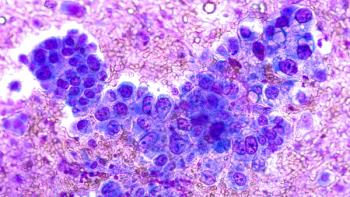
- August 2021
- Volume 87
- Issue 8
Concentrations of Ibuprofen Suspensions Are Error Prone
It is time to standardize to a single formulation to avoid mix-ups that can lead to adverse effects.
Parents who are told to give their child or infant OTC ibuprofen oral suspension may not be aware that 2 different concentrations are available.
An infant’s formulation (for infants aged 6-23 months or weighing 5.5- 10.5 kg or 12-23 lbs) contains 50 mg/1.25 mL (40 mg/mL). This is twice as concentrated as the children’s formulation (for children aged 2-11 years or weighing 10.9-43.1 kg or 24-95 lbs), which contains 100 mg/5 mL (20 mg/ mL). Community pharmacies, grocery stores, and mass merchandisers routinely stock both concentrations. Also, the labeling and packaging of the 2 concentrations can sometimes look similar.
Staff members at pediatric hospitals might be familiar with this and
have often made a point of educating parents about this issue at discharge. However, for many reasons, staff members have informed the Institute for Safe Medication Practices (ISMP) about mix-ups that sometimes occur after discharge. One reason is that some hospital computer systems sometimes convert oral liquid doses to a metric volume to help parents measure each dose using a dosing cup or oral syringe. However, the concentration parents might already have at home or purchase is often unknown.
One hospital reported a close call involving a child who was discharged from an ambulatory-surgery unit. The child’s mother was concerned because she was familiar with giving her child (who weighed 8.6 kg) less than 2 mL of ibuprofen, as per the manufacturer’s label instructions.
The discharge instructions, however, said to give 4.3 mL, or 86 mg of the 100-mg/5-mL concentration. After confirming that the mother had the 50-mg/1.25-mL concentration at home and not the 100-mg/5-mL concentration, the hospital was able to tell the mother the appropriate volume of ibuprofen to administer to her child for each dose.
In another case, a child was prescribed ibuprofen 70 mg every 6 hours. The child’s mother was told to give 3.5 mL of the medication for each dose, with the expectation that the 100-mg/5-mL suspension would be used. However, the child’s mother purchased ibuprofen suspension 50 mg/1.25 mL (200 mg/5 mL) and gave her child the 3.5 mL per dose as instructed. So instead of receiving 70 mg, the child received 140 mg per dose.
Fortunately, we are not aware of any serious adverse outcome resulting from this 2-fold overdose, but the possibility of adverse effects is likely increased. An overdose might lead to diarrhea, headache, kidney damage, nausea, stomach bleeding, and vomiting.
This situation is similar to an issue that has since been resolved with oral liquid acetaminophen (Tylenol) products, which, for many years, existed in 2 concentrations: a less concentrated liquid (160 mg/5 mL) for children and a more concentrated liquid (100 mg/mL) for infants.
When the 100-mg/mL concentration was accidentally administered to children in volumes appropriate for the 160-mg/5-mL product, there were accidental deaths and serious injuries to children. Faced with this evidence, manufacturers voluntarily withdrew the more concentrated infant product and agreed to only provide the 160-mg-per-5-mL concentration that is available today (some manufacturers label their products as 500 mg/15 mL).
Because of the potential for harm and the continuing nature of these ibuprofen errors, the ISMP has asked the FDA to look into the matter to determine whether the more concentrated product is necessary. One of the children’s hospital nurses who spoke with the ISMP queried colleagues about this, and the overwhelming response was, “Why isn’t there just 1 concentration of liquid ibuprofen similar to acetaminophen?”
Ideally, Johnson & Johnson Consumer Health, the original sponsor of Children’s Motrin (ibuprofen) for children aged 2 to 11 years, would modify the infant concentration to match the children’s concentration as was done for acetaminophen, with other ibuprofen manufacturers to follow.
For now, the ISMP recommends that health care providers counsel parents about the availability of the 2 liquid ibuprofen strengths and that the 100-mg/5-mL strength includes “children’s ibuprofen” in the name and the more concentrated 200/per-5-mL (50 mg/1.25 mL) strength is referred to as “concentrated infant drops.”
Also be sure that parents understand that the dose in mL (volume) must be based on which concentration they are using.
Michael J. Gaunt, PharmD, is a medication safety analyst and the editor of ISMP Medication Safety Alert! Community/Ambulatory Care newsletter at the Institute for Safe Medication Practices in Horsham, Pennsylvania.
Articles in this issue
over 4 years ago
August 2021 Interactive Case Studiesover 4 years ago
Managing Medications at School Is More Than a Family Affairover 4 years ago
International Overdose Awareness Day Is Somber Reminderover 4 years ago
Salt-Based Mosquito-Control Products Are Ineffectiveover 4 years ago
FDA Approves Ivermectin Lotion to Treat Head Liceover 4 years ago
Investigators Find Missing Piece to Lyme Disease Puzzleover 4 years ago
August 2021 Generic Product Newsover 4 years ago
Corner Drug Is a Thriving Multigenerational Family Businessover 4 years ago
State Legislation Aims to Improve Access to Genericsover 4 years ago
Heart Drug Has an Intriguing PastNewsletter
Stay informed on drug updates, treatment guidelines, and pharmacy practice trends—subscribe to Pharmacy Times for weekly clinical insights.














































































































































































































